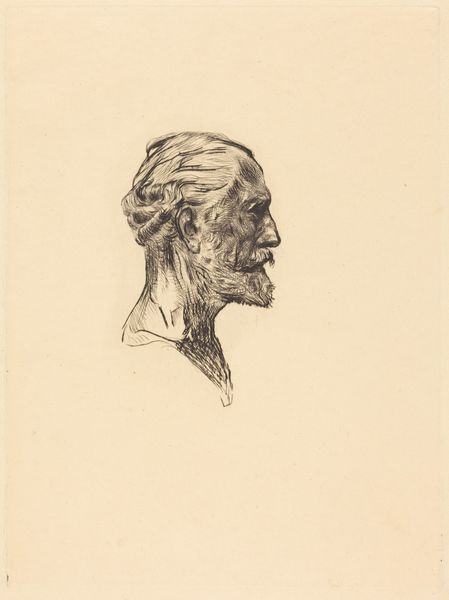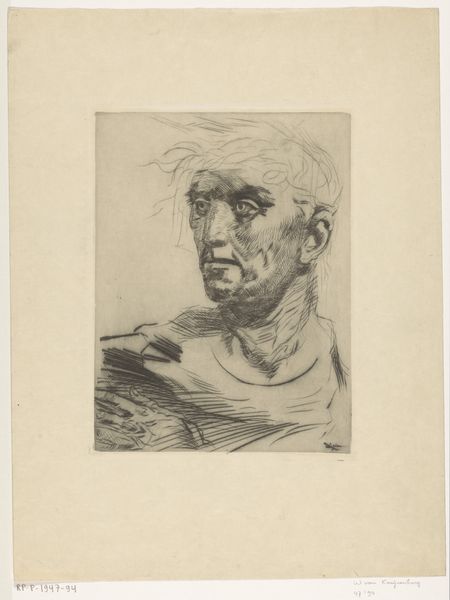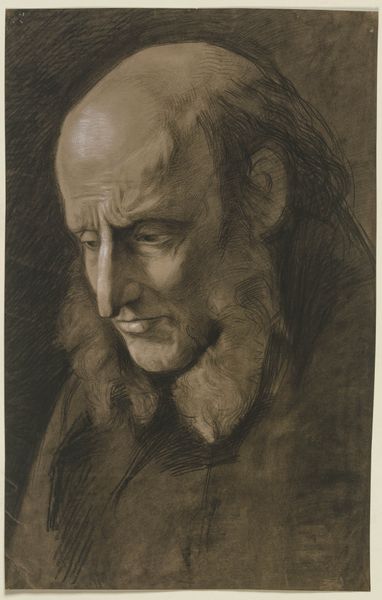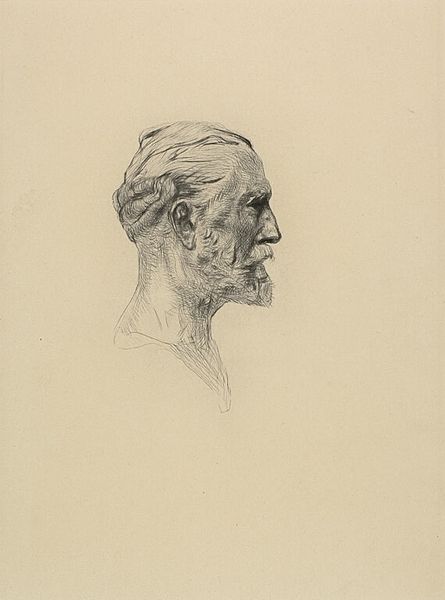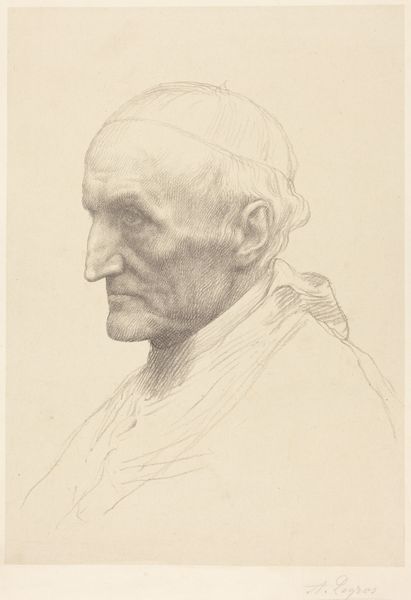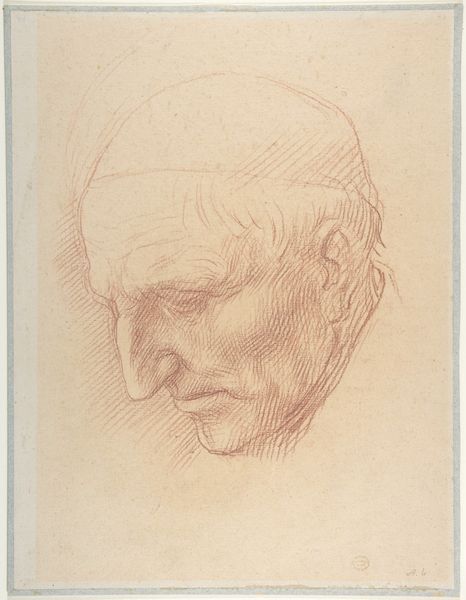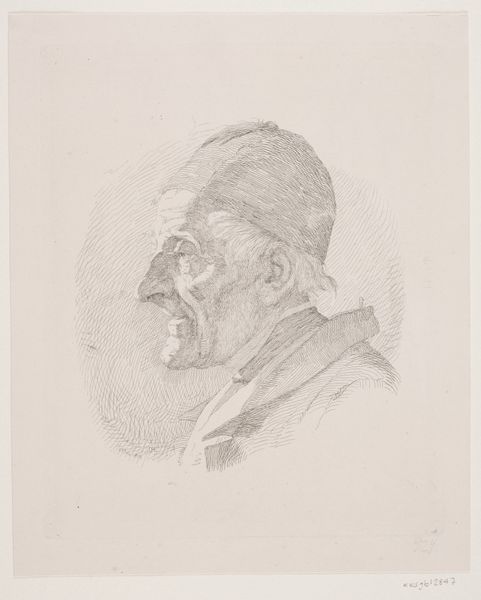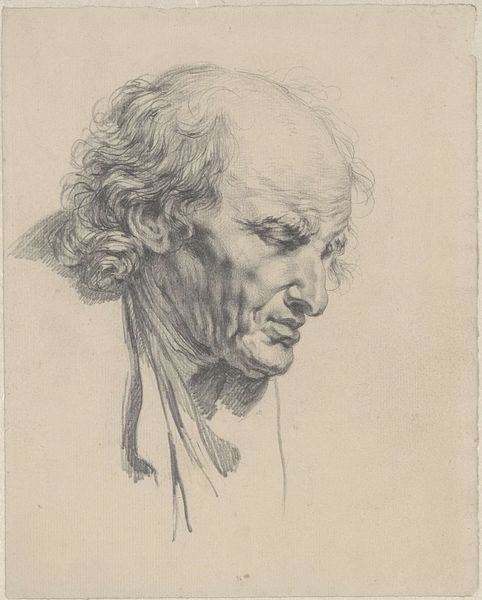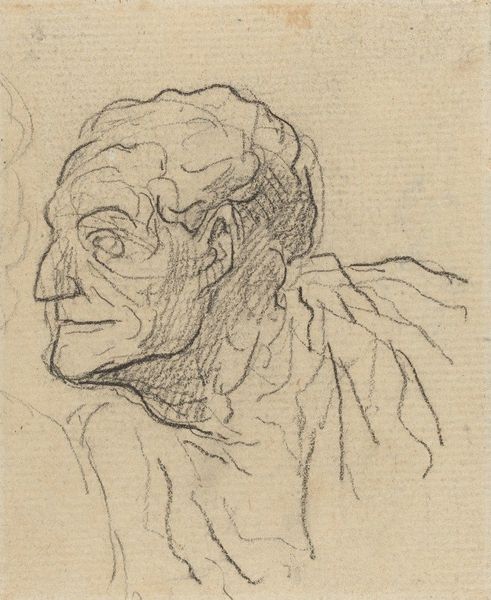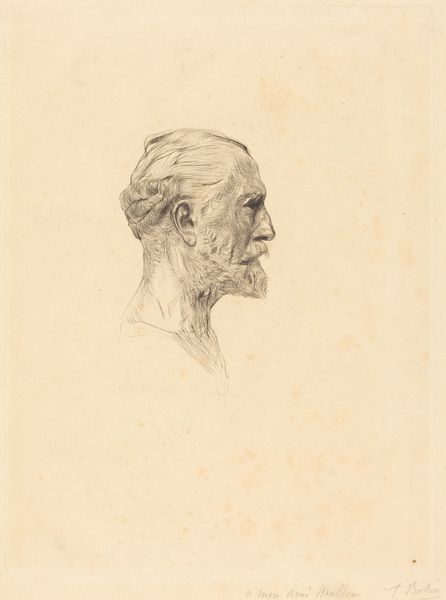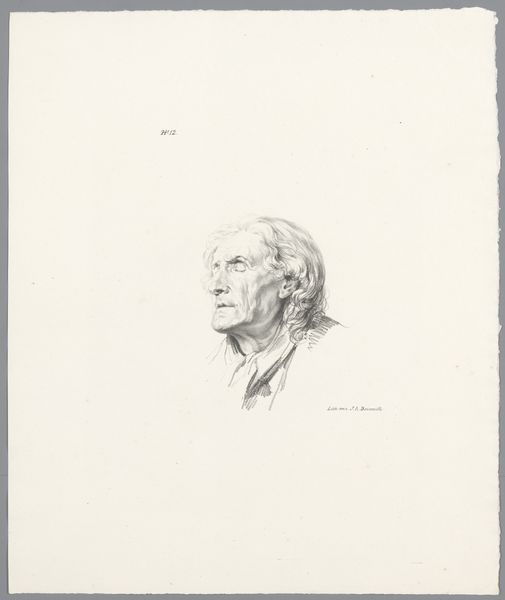
Kopf des sterbenden Revolutionärs G. im Gespräch mit Bischof Bienvenue Myriel, der dessen Segen erbittet after 1862
0:00
0:00
Copyright: Public Domain
Editor: This is Victor Müller's drawing, "Kopf des sterbenden Revolutionärs G. im Gespräch mit Bischof Bienvenue Myriel, der dessen Segen erbittet," made after 1862. It looks like it was created using charcoal, chalk, and pencil on paper. I’m struck by the strong lines and the somewhat somber, reflective mood. What do you see in this piece, especially given your perspective? Curator: I’m drawn to the very means of production here. Look at the paper – its materiality. The tooth of it grabs the chalk and charcoal, doesn't it? Consider then, the economic context. Paper production was becoming more industrialized after 1862. What grade of paper is this? Was this readily available to Müller, or was it a luxury that shaped the accessibility, and perhaps even the reception, of his work? This all connects to the labour of creation – both Müller’s skilled hand and the anonymous workers involved in producing the materials. Editor: That's a very interesting point! I hadn't considered the economics of art materials. Curator: Furthermore, note how Müller chose to represent the subject matter using these materials. Why drawing rather than oil paint? Does the perceived accessibility of drawing – a medium reliant on paper and readily available implements – impact how Müller conceptualizes his subjects, particularly given the inherent sociopolitical tension in the revolutionary seeking religious solace. Consider also the distribution of images; printed reproductions of drawings often circulated wider than paintings. What kind of audience was Muller trying to reach? Editor: So, it's not just about the figures in the drawing but about the materials themselves and the society that produced them? Curator: Precisely! The material history embeds this work in a web of production, labor, and social context. What this work *is* is entirely linked to how it was made and distributed. Editor: This has definitely opened my eyes to a completely different way of interpreting art. I am excited to apply the materialist perspective when considering how artists may attempt to affect the world and specific communities through art. Curator: And understanding how the means of creating influence its impact is crucial.
Comments
No comments
Be the first to comment and join the conversation on the ultimate creative platform.
